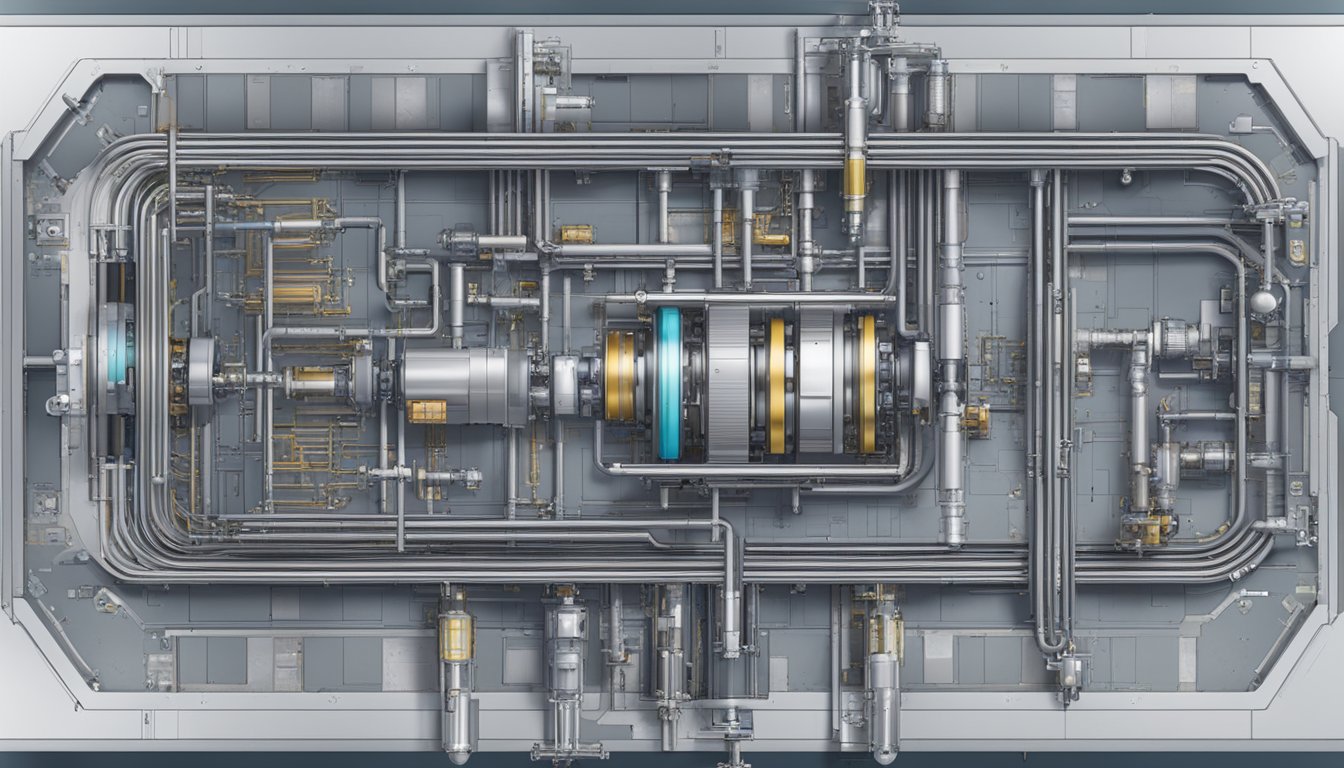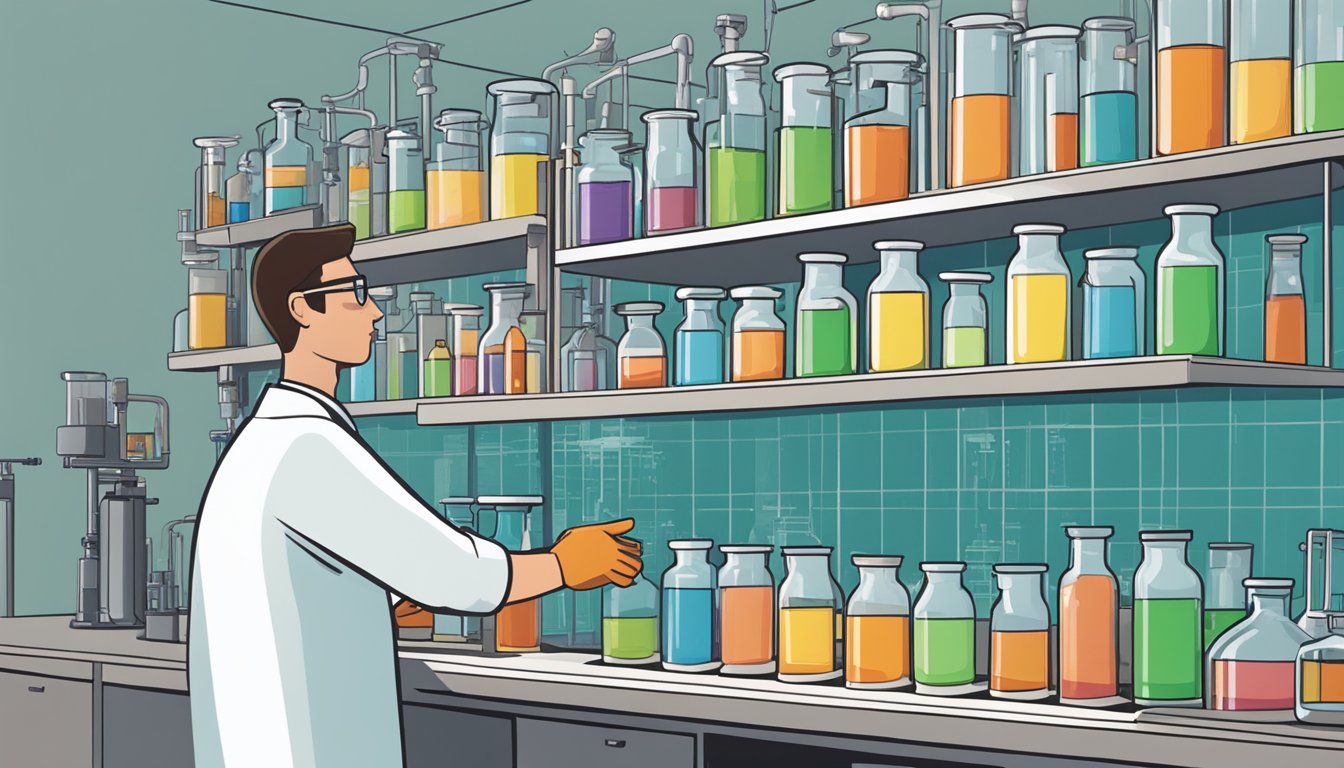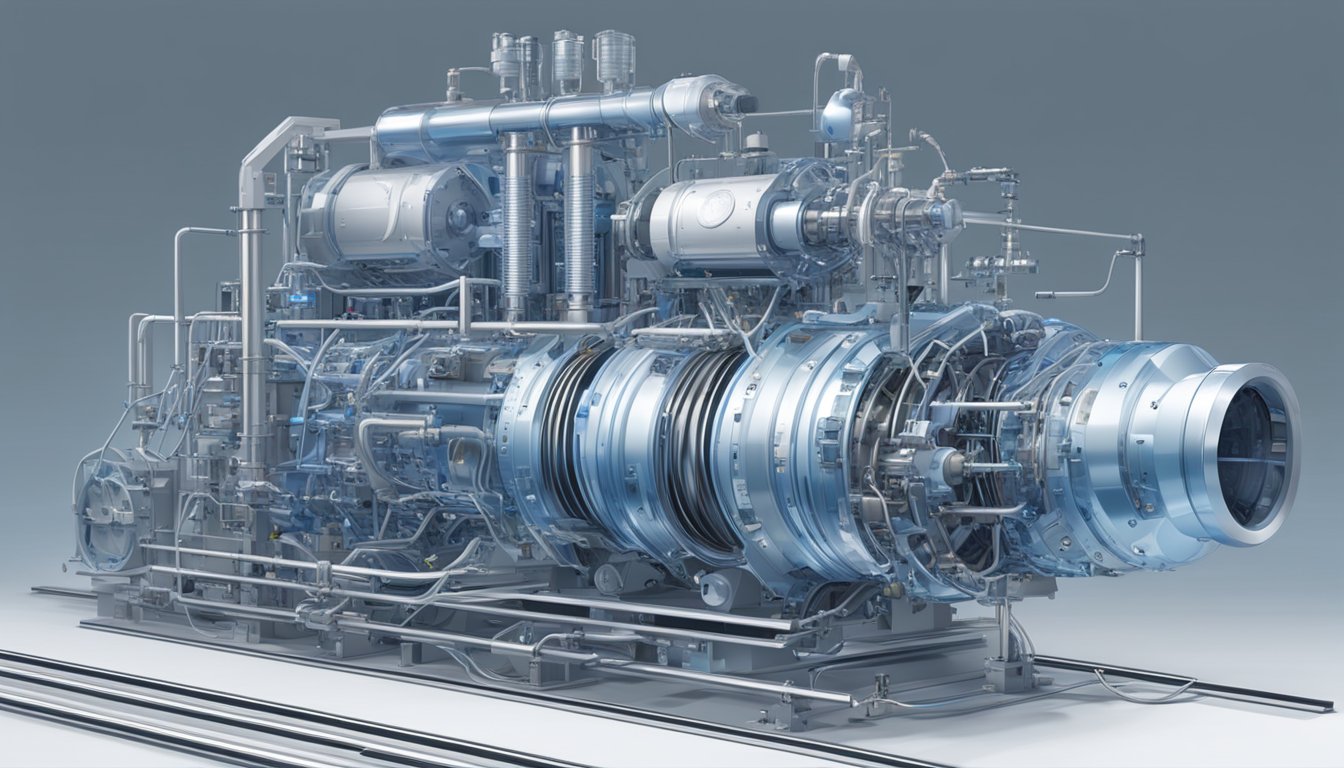Accelerator ZMBT: Benefits and Usage in Rubber Industry
19/01/2024
Accelerator ZMBT is a versatile semi-ultra accelerator that is widely used in the rubber industry. It is activated by all basic accelerators and can also be used to activate basic accelerators. When added in small amounts, it extends the processing safety of thiuram and dithiocarbamate cures without discoloration.

ZMBT is a thiazole accelerator that is preferred in latex foam curing systems. It can also be used as a primary accelerator in natural and synthetic rubbers. The product description, technical specifications, and applications of Accelerator ZMBT make it a popular choice in the rubber industry.
As with any chemical compound, regulatory and safety standards must be followed when handling Accelerator ZMBT. Market analysis shows that the demand for Accelerator ZMBT is expected to increase due to the growth of the global rubber industry. Despite its popularity, Accelerator ZMBT has some limitations and challenges that must be addressed. Future developments and innovations in the rubber industry may lead to new uses and applications for Accelerator ZMBT.
Key Takeaways
- Accelerator ZMBT is a versatile semi-ultra accelerator that is activated by all basic accelerators and can extend the processing safety of thiuram and dithiocarbamate cures without discoloration.
- ZMBT is a thiazole accelerator that is preferred in latex foam curing systems and can also be used as a primary accelerator in natural and synthetic rubbers.
- Despite its popularity, Accelerator ZMBT has some limitations and challenges that must be addressed, but future developments and innovations in the rubber industry may lead to new uses and applications for this versatile compound.
Overview of Accelerator ZMBT

Accelerator ZMBT is a versatile semi-ultra accelerator used in the rubber industry. It is activated by all basic accelerators, thiurams, and dithiocarbamates. This accelerator is non-staining and non-discoloring, making it an ideal choice for use in natural and synthetic rubbers.
ZMBT can also be used as a primary accelerator in latex foam curing systems, making it a popular choice for manufacturers. It is used in the same dosages as CAPTAX® (MBT), which is another popular accelerator in the rubber industry.
One of the unique properties of ZMBT is that it can extend the processing safety of thiuram and dithiocarbamate cures without discoloration, making it an ideal choice for manufacturers who want to improve the processing safety of their products.
In addition to its use in latex foam curing systems, ZMBT is also widely used in NR/SBR latex compounds along with Qureacc ZDC/ZDBC. It improves the state of cure in NR based compounds even at 120°C and also improves aging properties. It can be dispersed easily in water using common dispersing agents and can also be used in dry rubber compounds as a semi-ultra accelerator.
Overall, Accelerator ZMBT is a versatile and reliable accelerator that is widely used in the rubber industry. Its unique properties make it an ideal choice for manufacturers who want to improve the processing safety and aging properties of their products.
History of Accelerator ZMBT

Inception and Development
ZMBT, also known as Zinc 2-mercaptobenzothiazole, is a semi-ultrafast accelerator that is widely used in natural rubber and synthetic rubber. The accelerator was first synthesized in the 1950s by the R.T. Vanderbilt Company, Inc. as a secondary accelerator for natural rubber.
The development of ZMBT was a response to the need for an accelerator that could improve the cure rate of natural rubber compounds without causing scorch or blooming. ZMBT was found to be an effective alternative to other secondary accelerators such as diphenylguanidine (DPG) and zinc diethyldithiocarbamate (ZDEC), which were known to cause blooming and staining.
Milestones Achieved
Over the years, ZMBT has undergone several improvements and modifications to enhance its performance and versatility. In the mid-1960s, it was found that the addition of ZMBT to natural rubber compounds could improve their aging properties, making them more resistant to heat and oxidation. This discovery led to the widespread use of ZMBT in the production of automotive components such as tires, hoses, and belts.
In recent years, ZMBT has also been used as a primary accelerator in latex foam curing systems. Its non-staining and non-discoloring properties make it an ideal choice for latex foam applications. Moreover, it has been found that ZMBT can be easily dispersed in water using common dispersing agents, making it suitable for use in NR/SBR latex compounds.
In conclusion, ZMBT has come a long way since its inception in the 1950s. Its unique properties and versatility have made it an essential ingredient in the production of a wide range of rubber products.
Technical Specifications

Design and Components
Accelerator ZMBT or Zinc 2-Mercaptobenzothiazole is a versatile semi-ultra accelerator used in the production of natural and synthetic rubbers. It is activated by all basic accelerators, thiurams, and dithiocarbamates. ZMBT can also be used to activate basic accelerators and when added in small amounts will extend the processing safety of thiuram and dithiocarbamate cures without discoloration.
ZMBT is a white to light yellow powder with a melting point of 300°C. It is soluble in chloroform, benzene, and carbon disulfide, and slightly soluble in acetone, ethanol, and ethyl acetate. It is insoluble in water.
Operating Principles
ZMBT is primarily used as a secondary accelerator in sulfur-cured latex and as a primary accelerator in natural and synthetic rubbers. It is the preferred secondary accelerator in latex foam curing systems. Delayed action in cure can also be obtained when using Retarder BA with ZMBT or when MBTS is the secondary accelerator. The use of 2-4 phr of ZMBT with 0.5 – 0.05 phr thiuram and low sulfur exhibits outstanding resistance to heat. Normal use in mechanical goods would be 0.8 – 1.2 phr.
Performance Metrics
ZMBT is non-staining and non-discoloring. It exhibits outstanding resistance to heat and has excellent scorch safety. Normal use in mechanical goods would be 0.8 – 1.2 phr. The use of 2-4 phr of ZMBT with 0.5 – 0.05 phr thiuram and low sulfur exhibits outstanding resistance to heat.
In conclusion, ZMBT is a versatile semi-ultra accelerator used in the production of natural and synthetic rubbers. It is primarily used as a secondary accelerator in sulfur-cured latex and as a primary accelerator in natural and synthetic rubbers. ZMBT is non-staining and non-discoloring, and exhibits outstanding resistance to heat and has excellent scorch safety.
Applications of Accelerator ZMBT
Industrial Use Cases
Accelerator ZMBT is a versatile semi-ultra accelerator that can be used in various industrial applications. It is activated by all basic accelerators, thiurams, and dithiocarbamates. It can also be used to activate basic accelerators and when added in small amounts will extend the processing safety of thiuram and dithiocarbamate cures without discoloration 1.
One of the main industrial applications of Accelerator ZMBT is in the production of latex foam. It is the preferred secondary accelerator in latex foam curing systems, and can also be used as a primary accelerator in natural and synthetic rubbers 2. It is non-staining and non-discoloring, making it an ideal choice for use in products that require a clean appearance.
Accelerator ZMBT is also used in the production of medical latex products. It is suitable for use in NR, IR, BR, SBR, NBR, EPDM, and latex. When used in dry rubber, it has the same properties as MBT with low scorch. It is mildly active in latex systems and has no rubber coloring properties 3.
Research and Development
Accelerator ZMBT has been the subject of various studies in the field of rubber technology. A study on the effects of accelerators on the cure characteristics and mechanical properties of natural rubber compounds found that ZMBT, when used as a secondary accelerator with mercaptobenzothiazole disulphide (MBTS) as the primary accelerator, improved the cure rate and mechanical properties of the rubber compounds 4.
Another study investigated the effect of latex purification and accelerator types on rubber allergens. The study found that ZMBT, along with other accelerators, can be used to improve the properties of rubber products without increasing the risk of allergic reactions 5.
Overall, Accelerator ZMBT is a versatile semi-ultra accelerator that has various industrial applications and has been the subject of research in the field of rubber technology. Its non-staining and non-discoloring properties make it an ideal choice for use in products that require a clean appearance.
Footnotes
- Akrochem Corporation ↩
- Vanderbilt Worldwide, Ltd. ↩
- RAYWAY Rubber Accelerator ZMBT ↩
- Effects of accelerators on the cure characteristics and mechanical properties of natural rubber compounds ↩
- Effect of Latex Purification and Accelerator Types on Rubber Allergens ↩
Regulatory and Safety Standards
Compliance Requirements
Accelerator ZMBT is regulated by various governmental agencies, including the United States Environmental Protection Agency (EPA) and the European Chemicals Agency (ECHA). It is important to comply with all applicable regulations when handling and using this chemical.
In the United States, ZMBT is subject to the Toxic Substances Control Act (TSCA). Under TSCA, manufacturers and importers of ZMBT must submit certain information to the EPA, including production volume, use, and exposure information. In addition, downstream users of ZMBT must comply with all applicable TSCA regulations, including recordkeeping and reporting requirements.
In the European Union, ZMBT is subject to the Registration, Evaluation, Authorization and Restriction of Chemicals (REACH) regulation. Under REACH, manufacturers and importers of ZMBT must register the chemical with ECHA and provide certain information, including production volume, use, and exposure information. Downstream users of ZMBT must also comply with all applicable REACH regulations.
Safety Protocols
ZMBT can pose certain health and safety risks if not handled properly. It is important to follow all recommended safety protocols when handling and using this chemical.
ZMBT can cause skin irritation and sensitization. Therefore, it is recommended to wear protective gloves and clothing when handling the chemical. In case of skin contact, the affected area should be washed thoroughly with soap and water.
Inhalation of ZMBT dust or vapors can cause respiratory irritation. Therefore, it is recommended to wear a respirator when handling the chemical in areas with poor ventilation. In case of inhalation exposure, the affected person should be moved to an area with fresh air and given medical attention if necessary.
ZMBT is not considered to be a flammable or explosive material. However, it should be stored in a cool, dry, and well-ventilated area away from heat sources and incompatible materials. It is also important to follow all applicable regulations when disposing of ZMBT, including local, state, and federal regulations.
Market Analysis
Current Market Trends
Zinc 2-Mercaptobenzothiazole (ZMBT) market is primarily driven by the increasing demand for rubber products, especially in the automotive industry. ZMBT is used as an accelerator in the production of rubber products, which makes it an essential component in the tire manufacturing process. The growing automotive industry, coupled with the increasing demand for tires, is expected to drive the growth of the ZMBT market.
Another factor driving the growth of the ZMBT market is the increasing demand for eco-friendly and sustainable products. ZMBT is a synthetic chemical compound that is widely used as an accelerator for rubber products. It is considered to be an eco-friendly alternative to other accelerators, such as mercaptobenzothiazole (MBT), which is known to be harmful to the environment. As a result, the demand for ZMBT is expected to increase in the coming years.
Future Projections
The global ZMBT market is expected to grow at a steady rate in the coming years. According to a market research report by Valuates Reports, the global rubber vulcanization accelerator ZMBT market is projected to reach USD million by 2028 from an estimated USD million in 2022, at a CAGR of % during 2023 and 2028. The North American market for rubber vulcanization accelerator ZMBT is estimated to increase from USD million in 2022 to reach USD million by 2028, at a CAGR of % during the forecast period.
The Asia-Pacific region is expected to witness significant growth in the ZMBT market due to the increasing demand for rubber products in the automotive industry. The region is home to some of the world’s largest automotive manufacturers, such as Toyota, Honda, and Hyundai, which are expected to drive the demand for ZMBT in the region.
Overall, the ZMBT market is expected to witness steady growth in the coming years, driven by the increasing demand for rubber products and the growing trend towards eco-friendly and sustainable products.
Challenges and Limitations
Despite the numerous advantages of using accelerator ZMBT, there are also some challenges and limitations associated with its use.
One significant challenge is that ZMBT is not as effective as other accelerators in low-temperature vulcanization. This limitation can be overcome by using ZMBT in combination with other accelerators, such as MBTS or CBS, which can improve the cure rate at low temperatures.
Another limitation is that ZMBT can cause discoloration and staining in some rubber compounds, especially those containing high levels of sulfur. To minimize this issue, it is recommended to use ZMBT in low dosages and in combination with other accelerators.
Additionally, ZMBT has a relatively slow curing rate, which can lead to longer processing times and increased energy consumption. To address this limitation, it is recommended to use ZMBT in combination with other accelerators, such as TMTD or DPG, which can improve the cure rate and reduce processing time.
Despite these challenges and limitations, accelerator ZMBT remains a popular choice for the vulcanization of natural and synthetic rubbers, especially in latex foam curing systems. Its versatility, non-staining properties, and ability to extend the processing safety of thiuram and dithiocarbamate cures make it an attractive option for many rubber manufacturers.
Future Developments and Innovations
As with any industry, the rubber industry is constantly evolving and looking for ways to improve its products. In the case of accelerator ZMBT, there are a few areas where future developments and innovations could be made.
One area that could see improvement is in the environmental impact of ZMBT production. As consumers become more environmentally conscious, there is a growing demand for products that are produced sustainably and with minimal environmental impact. Manufacturers of accelerator ZMBT could explore ways to reduce their carbon footprint and minimize waste during the production process.
Another area where innovation could occur is in the development of new formulations that incorporate ZMBT. By combining ZMBT with other accelerators or additives, manufacturers could create new products with unique properties and applications. For example, a combination of ZMBT and MBTS could potentially result in a faster curing time without sacrificing other desirable properties.
Finally, there is potential for innovation in the application of ZMBT in new industries or products. While ZMBT is currently used primarily in the rubber industry, there may be other applications where its properties could be useful. For example, it could potentially be used as a corrosion inhibitor in certain metalworking applications.
Overall, while accelerator ZMBT is a well-established product, there is always room for improvement and innovation in the industry. By exploring new formulations, production methods, and applications, manufacturers can continue to meet the evolving needs of their customers and stay ahead of the competition.




